The Beginning
In the fall of 2010, Sylvie and I attended a workshop on bees in urban scapes. We began to think about having our own hives. I even visited a beekeeper who wanted to sell some of his hives. I visited him and took some pictures, including of those hives (e.g., right) that the gentlemen wanted to sell.
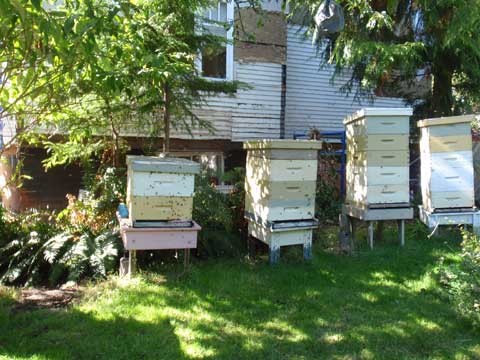
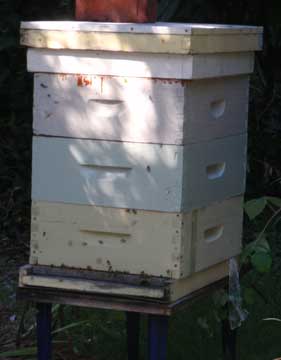
Because we were about to on a trip to Vietnam, Sylvie suggested to wait. And so we did. Our bee project was on hold. But in January 2011, her friend from the pool said that she knew someone, Bill, who would be willing to be my "Bee Buddy," whom I could call and visit anytime I needed. And this turned out to be the beginning.
In the Midst of It
Faster than I thought, I was deep into it. When I called Bill, he said to meet up with him at the next meeting of the Victoria Beekeepers Association. And he talked about building rather than buying my hives.
I bought a table saw and a cross-cutting saw that I never had. And I bought wood. I often had thoughts about not being able to finish hives before the bees would be coming at the end of February. And I got right to work in the garage, ripping the wood, building the base and supers, ripping the material for the frames into which the foundations are placed onto which the bees would produce the honeycomb.
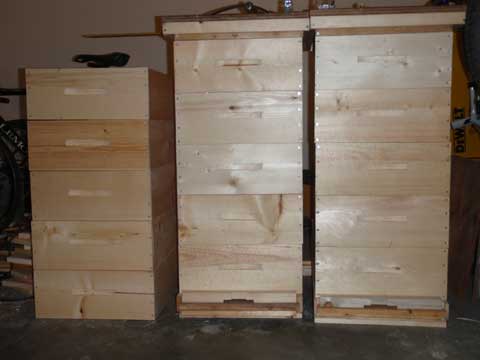
Two unpainted bases and 15 supers with inner and outer covers are standing in the garage.
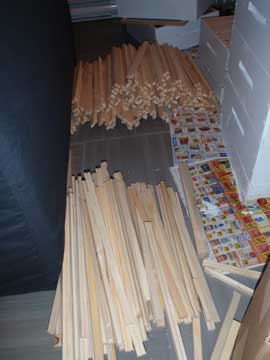
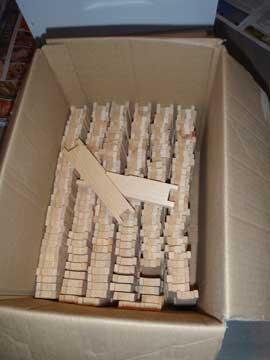
On my table saw, I have cut the material for over 100 frames – enough to get me started. Unfortunately, while doing so, I also got my left hand into the running blade and cut off part of my nail and tip of the index finger.
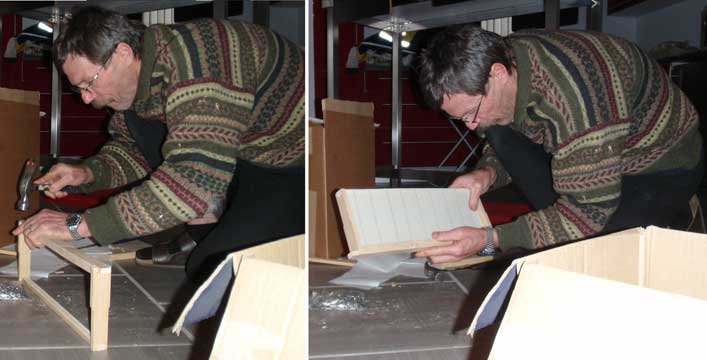
I am nailing together the wooden part of the frame and then place the wired wax foundations into the upper and lower slits.
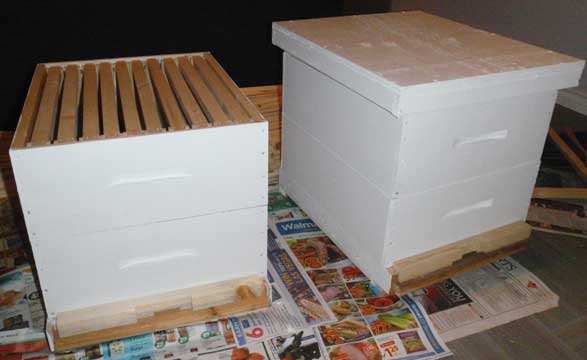
Two finished hives, one open exposing the ten-frame brood chamber, the other one closed (still missing the sheet metal protection on top.
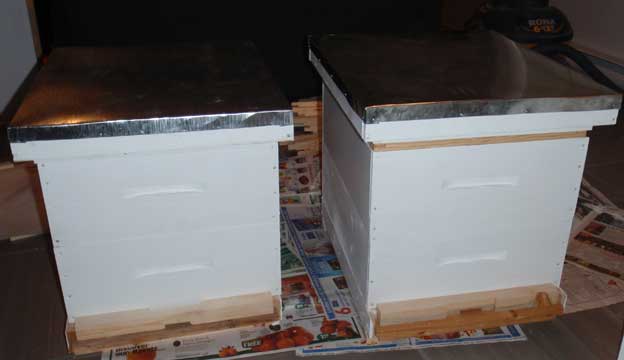
Here they are now with their sheet metal tops.
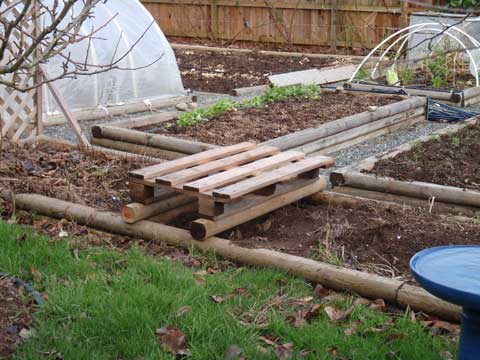
Using an old palette and a landscape tie, I produced a place for the two hives – entrances facing south. The spot has lots of sun, from early in the morning when it rises above the house in the ESE of us, and until about 4pm in the afternoon, when the shade from our house falls on that part of the garden.
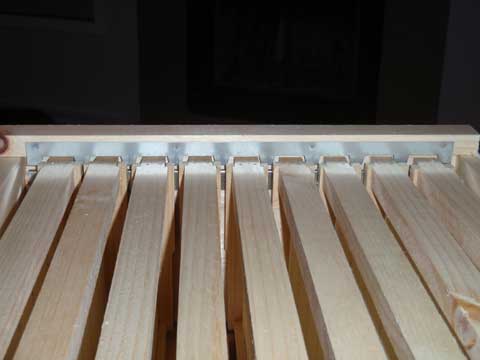
My bee buddy talked to me about making a spacer to get the distance between the frames in the honey supers. He said he made one himself but I didn't see it. I bought a metal support with spacers – which he said not to use so that we can move the frames more freely when we have to – and then build a spacing tool.
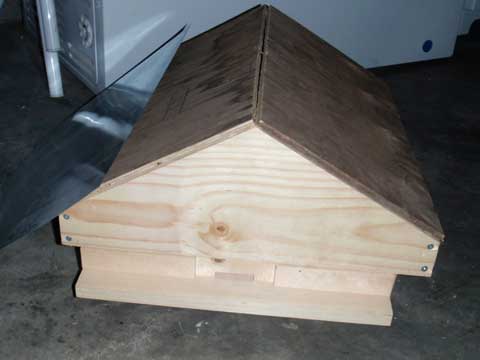
I am in the process of building a spare base and roof. I had seen a slanted one in the store. Because I have 2 sheet metal pieces each of which is too small to make a flat cover, I decided to make this roof and use the two parts, one of which can be seen on the left.
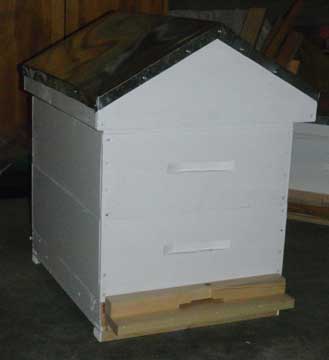
I finally got to finishing the outer cover with the slanted roof.